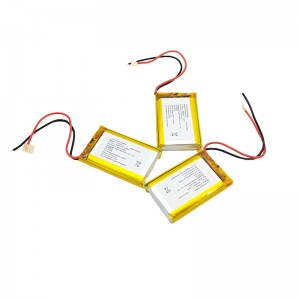Lithium-ion batteries have become an essential part of our daily lives. From powering our smartphones to electric vehicles, these batteries provide a reliable and long-lasting source of energy. However, despite their numerous advantages, they are not without their issues. One problem commonly associated with lithium batteries is voltage-related problems. In this article, we will discuss lithium battery voltage and how to recognize LiPo voltage alarm and battery output voltage problems.
Lithium batteries operate at various voltages depending on their chemistry and state of charge. The most common lithium-ion batteries, known as LiPo batteries, have a nominal voltage of 3.7 volts per cell. This means that a typical 3.7V LiPo battery consists of a single cell, while larger capacities may have multiple cells connected in series.
The voltage of a lithium battery plays a crucial role in determining its performance and capacity. It is important to monitor the battery voltage to ensure its safe and efficient operation. This is where the LiPo voltage alarm comes into the picture. A LiPo voltage alarm is a device that alerts the user when the battery voltage reaches a certain threshold. This helps prevent over-discharge, which can damage the battery or even lead to safety hazards.
Recognizing when a LiPo voltage alarm is triggered is essential for maintaining the longevity of the battery. When the voltage drops below a set threshold, the alarm will sound, indicating that it is time to recharge or replace the battery. Ignoring this warning can result in irreversible damage to the battery's performance and decrease its overall lifespan.

In addition to LiPo voltage alarms, it is equally important to be aware of battery output voltage problems. This refers to issues related to the voltage supplied by the battery to the device it powers. If the battery output voltage is too low, the device may not function correctly or even fail to start. On the other hand, if the output voltage exceeds the device's tolerance level, it can cause damage to the device itself.
To ensure that the battery output voltage is within the acceptable range, it is crucial to use a reliable voltage measuring tool. This can be a digital multimeter or a voltage checker specifically designed for LiPo batteries. By regularly monitoring the battery output voltage, you can identify any deviations from the normal range and take appropriate action. This may involve replacing the battery or addressing any underlying issues with the device.
In conclusion, lithium battery voltage is a critical aspect of ensuring the safe and efficient operation of these energy storage devices. By recognizing LiPo voltage alarm and battery output voltage problems, you can prevent potential damage, prolong the lifespan of the battery, and ensure the proper functioning of the devices powered by these batteries. Remember to regularly monitor the battery voltage and take prompt action to address any issues that arise.
Post time: Jun-20-2023